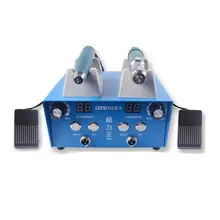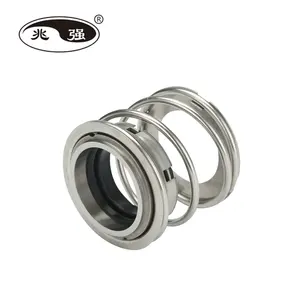Introduction
Navigating the world of mechanical water pumps can be a daunting task, given the array of types, designs, and functionalities available. This comprehensive guide aims to demystify the process of choosing the right mechanical water pump for your needs. We delve into the principles of operation, explore various types of pumps, and provide insights into factors that influence pump performance and efficiency. We also discuss the environmental impact of these pumps, their installation and operation, and common problems and troubleshooting techniques. Whether you're a seasoned professional or a novice in the field, this guide will equip you with the knowledge to make an informed decision.
Understanding Mechanical Water Pumps
Mechanical water pumps operate based on the principle of impeller and its vanes. The size and design of the impeller dictate the pressures, discharge capacities, and types of material that can pass through the pump. Deeper vanes produce a larger discharge capacity, while a larger diameter impeller with more, shallower vanes will produce greater pressure. The impeller material and the size of the volute discharge opening determine what size material can pass through the pump without damaging it.
Types of Mechanical Water Pumps
Mechanical water pumps come in various types, each with unique functionalities. Centrifugal pumps use a rotating impeller to move and pressurize water. Rotary pumps, including gear, screw, and vane pumps, manipulate highly viscous fluids effectively. Reciprocating pumps, a type of positive displacement pump, have expanding and decreasing cavities on the suction and discharge sides, respectively, displacing fluid with each cycle. Other types include submersible pumps, which operate submerged in fluid, peristaltic pumps that use rotating rollers to move fluid, and diaphragm pumps that use a flexible diaphragm to pump liquid.
Centrifugal Pumps
Centrifugal pumps are a type of mechanical water pump known for their strong, dependable performance even in demanding conditions. These pumps are a part of both residential and commercial water solutions, contributing to smart, sustainable water management. The focus of these pumps is to provide efficient water solutions that help our planet and people thrive.
Rotary Pumps
Rotary pumps, a type of mechanical water pump, are available in various shapes and sizes. They are classified based on the number of rotating pumping elements, with two major types being single and multiple rotor pumps. Single rotor pumps include vane pumps, flexible member pumps, rotary piston pumps, peristaltic pumps, and progressive cavity pumps. Multiple rotor pumps include gear pumps and circumferential piston pumps. Some pumps, like screw pumps, can have either multiple or single rotating elements. Each type has unique features and applications, making rotary pumps versatile and efficient.
Reciprocating Pumps
A reciprocating pump, a type of mechanical water pump, is a positive-displacement pump that includes piston, plunger, and diaphragm pumps. These pumps are durable, lasting for decades with proper maintenance. They are typically used where a small quantity of liquid needs to be handled under high pressure. The core component of these pumps is a stationary cylinder that contains a piston or plunger.
Factors to Consider When Choosing a Mechanical Water Pump
When choosing a mechanical water pump, understanding pump design fundamentals is crucial. Factors such as whether the system is closed or open, the pumping approach (constant or variable flow), and the arrangement (series or parallel) are important. Additionally, the pump's location within the system, the pressure it needs to handle, and its efficiency point are key considerations. It's also essential to consider the pump's net positive suction head (NPSH) to avoid cavitation. Lastly, the pump should operate within its best efficiency point (BEP) to mitigate risks like cavitation, vibration, and impeller damage.
Pump Performance and Efficiency
Pump efficiency is crucial in the performance of mechanical water pumps. It refers to how well a pump converts input energy into output energy. Centrifugal pumps, a type of mechanical water pump, can offer efficiencies between 50 to 93 percent. The overall efficiency of a centrifugal pump is calculated by the ratio of the water (output) power to the shaft (input) power. This efficiency is influenced by mechanical, volumetric, and hydraulic factors. Understanding these aspects can help in making an informed choice when selecting a mechanical water pump.
Material and Durability
When choosing a mechanical water pump, material selection is crucial. Factors affecting this choice include pump type, components, liquid pumped, manufacturing method, and cost. For instance, cast iron is often chosen for its corrosion resistance and noise dampening properties. Plastics and other non-metallic materials are also popular for their unique properties. The final selection may vary between manufacturers due to their specialization in different manufacturing methods. Material selection for large pumps differs from small pumps, with the former often requiring materials resistant to abrasion and impact.
Cost and Maintenance
The cost of maintaining and repairing a mechanical water pump can vary greatly, depending on the severity of the issue. Minor repairs, such as fixing a loose float switch or a damaged impeller, can range from $75 to $225. More significant problems, like a failing motor or a damaged discharge pipe, can cost between $125 and $300. If a complete replacement is necessary, expect to pay between $400 and $1,000, depending on the type of pump. Remember, labor costs can add an additional $50 to $100 per hour.
Environmental Impact
Water pumps, including mechanical ones, have a significant environmental impact. They require substantial energy, often powered by electricity or fossil fuels, contributing to greenhouse gas emissions. They can also cause noise pollution, disturbing wildlife and potentially causing hearing issues for humans. Water pollution is another concern, as pumps used for irrigation or drainage can carry pollutants into water bodies. Additionally, they can lead to habitat destruction, particularly in extensive irrigation projects. However, choosing energy-efficient pumps and using renewable energy sources can mitigate these impacts.
Installation and Operation
The installation of mechanical seals in centrifugal pumps, a type of mechanical water pump, is a critical process. It begins with powering off the pump and isolating the fluid. The pump is then disconnected, and the impeller removed to access the seal. The old seal is detached, and a new one is carefully installed. The impeller is reinstalled, and the pump is reconnected. The machine is restarted, ensuring the pump casing is refilled. It's crucial to follow safety precautions and ensure proper alignment to prevent premature seal failure.
Understanding Pump Curves
Understanding pump curves is crucial when choosing a mechanical water pump. A pump curve denotes flow and head pressure, indicating how a pump will perform under specific conditions. The best efficiency point (BEP) is the pump's operating 'sweet spot', usually located near the middle of the curve. The system curve, overlaid on the pump curve, represents the system head at various flow rates. The intersection of these curves indicates the pump's actual operating point. Changes in impeller diameter or system conditions can affect pump performance, but it should ideally fall within the preferred operating region (POR).
Common Problems and Troubleshooting
Water pump failure can occur due to several reasons. A common issue is reduced water flow, often caused by the pump being too far from the water source, low water levels, reduction in supply line diameter, or intake line obstruction. Unchecked changes in pumping conditions, iron contamination, improperly connected motor, and motor failure due to overheating are other potential causes. Regular maintenance, correct installation, and monitoring can help prevent these issues and ensure the pump's longevity.
Conclusion
In conclusion, the choice of a mechanical water pump is a multifaceted decision that requires a thorough understanding of the pump's design, type, performance, and efficiency. Material selection, cost, maintenance, and environmental impact are also crucial considerations. Furthermore, the installation process, understanding pump curves, and troubleshooting common problems are essential aspects of pump operation and maintenance. By considering all these factors, you can ensure that you choose a pump that not only meets your specific needs but also contributes to sustainable water management. Remember, the right pump can make a significant difference in performance, cost-effectiveness, and environmental impact.











































 浙公网安备 33010002000092号
浙公网安备 33010002000092号 浙B2-20120091-4
浙B2-20120091-4